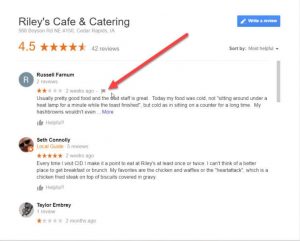— July 26, 2019
Growing a business is complicated. According to SBE Council, 89% of all businesses employ fewer than 20 employees. And scaling a company further is contingent on solving a number of challenges — most of those being common across all organizations out there.
Businesses in their first year or two, under 10 to 20 employees, and making less than $ 500,000 in revenue are still validating their business model. Once a certain sense of stability is met, several repetitive challenges keep haunting organizations, over and over again.
Which is why I’ve compiled this comprehensive list of the most impactful businesses challenges that companies have to deal with. Resembling the feast or famine cycle freelancers are notorious for, the balancing act requires juggling with multiple challenges at a time, often across different categories.
The list is broken down into 7 core categories, each of them describing a painful challenge growing organizations struggle with throughout their growth journey.
1. Business Strategy
Equally valid for small enterprises and large corporations, staying ahead of the game is a fine art for any organization out there.
Risk too much and you’re running at loss. Remain comfortable in your position and competition will steal your most valued customers.
1.1. Designing Systems and Processes
Business process management, as defined in Wikipedia, is the discipline responsible for applying techniques and methods to discover, model, analyze, measure, improve, optimize, and automate business processes.
Aside from professional consultancies, BPM is a leading challenge across growing organizations. Processes evolve over time as the business penetrates new markets and hires employees.
New recruits affect the company’s hierarchy, often leading to new tiers of management, operational procedures, and management workflows.
An ineffective set of processes will impact in-house and external communication, the company’s morale, the efficiency of hiring new people at scale, and the profitability across the onboarding of new roles.
1.2. Lack of Direction/Vision
Companies wandering around without a long-term vision are clearly threatened by organizations with a clear agenda in place.
Kodak passed on the opportunity to release the first digital camera. They felt secure in their photography world while neglecting the drawbacks of traditional cameras in the era of evolving digital innovations.
Toys R Us faded away for good while millennials and generation Z embraced video games and online shopping. Smaller stores sold the same products at a discounted price, in neighborhoods all around the world.
Even billion-dollar enterprises can easily drop out of a competitive landscape unless they keep innovating, attracting new markets, and staying on top of the latest innovations.
Executives and senior managers can leverage the power of SWOT analysis frameworks and identify the missing links in their leadership strategy.
1.3. Coping With Market Competition
An old branding rule states that the best businesses are:
- The first in a category
- Or the best in a category
Younger startups fail to define their unique competitive advantage among established giants. Industry leaders, on the other end, miss stealth startups rapidly aiming at their target market, revealing their weaknesses and coming up with a counter-offer.
A smart workaround is targeting foreign markets for higher profit margins. Acquiring the majority of a market in a less competitive area can generate enough buzz to bootstrap the business in “red ocean” territories harder to penetrate at first.
1.4. Keeping Up With Market Transformations
Adapting to market transformations and technological innovations isn’t easy at scale.
US companies with hundreds of employees abandoned EU markets after the introduction of GDPR in May 2018. Old-school businesses who couldn’t train their staff basic computer operator skills struggle to operate in a competitive digital environment.
Advertising in newspapers and social media is a different game. Just as adapting a traditional “car salesman” process to a modern business development workflow given a transformed buyer’s journey.
Being “up to speed” with the latest business, digital, economic and political trends isn’t easy. We may be following the industry journals, but groundbreaking innovations are deployed quietly, emerging globally once they get enough traction for scale.
1.5. Reducing Dependencies On The Founding Team
A common problem for startups and smaller businesses where founders are heavily involved in day-to-day operations.
Smart founders are aware of the benefits of working “on” the business instead of “in” the business. But implementing this in practice is complicated.
Inefficient execution leads to blockers and broken workflows, swamping the founding team, delaying deliverables, capping growth, and reducing the level of institutional knowledge in the team.
Designing a recruitment and growth strategy around building a leadership team of intrapreneurs is a lesser-known solution to this common business challenge.
1.6. Balancing Quality And Growth
Growing consultancies often report reduced quality while scaling, especially the fast-growth ones.
During the first year or two, a small handful of people is in charge of all operations. Skilled professionals start a business, deliver outstanding quality, work day and night on execution, and build a client base.
Throughout the growth period, new roles are created — support, business development, marketing, management. As recruitment and onboarding processes are still in their infancy, this creates a separation between the level of quality across different team members.
Moreover, hiring A-players isn’t sustainable at scale. A large corporation can only survive with a complex set of repetitive workflows, easy to follow by anyone who jumps on board. Relying on creativity, self-management, and proactivity is risky and nearly impossible for multinational enterprises.
2. Marketing
Marketing is a blended term encompassing a broad set of professional activities. It’s not a necessity for tiny teams.
Growing further? It’s absolutely paramount.
Here are the main marketing challenges that businesses face while growing.
2.1. Building Effective Marketing Strategies
What is the #1 problem with generic terms like “Marketing”, “Negotiations”, “Management”?
Everyone assumes they get the gist out of them.
You don’t have to be certified or spend 4 years in a college to manage a couple of people. But managing two people in a SMB is completely different than managing a team of top-tier engineers in Google, for example.
Organizations often rely on rumors and common trends online, including:
- Blogs are the way to go
- You should spend a lot of time on social
- Video will rule in 2019
- Marketing transforms to AI
The lack of any strategy in place, setting up adequate key performance indicators, and producing actionable business results is a major bottleneck for many businesses, especially traditional ones.
Making the first step to refining your marketing strategy is important. Don’t miss out.
2.2. Properly Allocating Marketing Resources
Investing is marketing isn’t intuitive at first. There are plenty of options for launching marketing initiatives:
- Hiring a marketing co-founder
- Onboarding a director of marketing
- Starting with an assistant or two
- Working with freelancers
- Signing with an agency
Businesses in different stages can apply marketing in various forms. Without the right strategy in place, marketing will be chaotic, generating minimum (if any) ROI, and more expensive than useful.
And exploring the alternatives between outsourcing or building marketing teams is the best next step.
2.3. Measuring Marketing Initiatives
Setting up the right KPIs (key performance indicators) is an art.
The most common response I get while chatting with clients regarding KPIs is “revenue“.
Of course, revenue growth is the ultimate goal for almost any business. But it is achievable through multiple channels. Each representing a chain of techniques and events leading to a sale or a conversion.
The lack of direction — and the vagueness of a strategy — won’t lead to a tight process, a measurable one that gets the job done.
Which is why professional marketers outline a successful content strategy which is broken down into multiple phases, over time, with certain indicators in place. Traffic, conversion rates, sign ups, email open rates, brand searches — and hundreds of others of factors contributing to generating a purchase.
2.4. Building a Corporate Brand
A powerful brand can go a very long way.
Most reputable and well-known brands in the world can afford to:
- Receive tons of PR attention
- Get thousands of job applications at no cost
- Present at the best events out there
- Land customers with little friction
- Receive free backlinks (being quoted and pointed as an example all the time)
- Rank high in Google as a result
- Gather a loyal, enormous group of followers online
Brand building is a complex, long-term initiative, and measuring results isn’t easy. But the effects of a powerful brand are indisputable.
Employer branding is an extremely powerful weapon for recruitment, especially at rapidly growing organizations.
The return on investment in brand building for large corporations is the leading reason hundreds of millions are poured into street billboards and TV ads. Believe it or not, it pays off with time.
2.5. Relying On Marketing For Lead Generation
As discussed a bit earlier, defining optimal strategies and measuring KPIs is complex. As a result, businesses know that marketing is essential — but they remain unsure of its efficiency.
They can’t predictably hire and grow revenue thanks to marketing initiatives.
They can’t scale budgets sustainably due to fluctuating results.
And this impacts their sales and business development processes as a result. This stagnation reflects on revenue growth, salary increments, and employee retention at the workplace.
Successful businesses have the right processes in place, measure KPIs related to actual purchases, and can pump up additional resources for predictably increasing their revenue.
3. Recruitment
Starting businesses care a lot more and more frequently about landing new customers. Once they build a small team and form a couple of recurring revenue streams, scaling the company becomes a bigger challenge.
And what are the main recruitment hassles businesses complain about?
3.1. Hiring New Employees
You’ve closed a strategic partnership or closed a massive deal — but you lack manpower to execute. How quickly can you scale the team?
Unless your brand speaks for itself or your budgets are through the roof, competing with everyone on the market for top talent is a shark pool.
Top talent can start anywhere. They get the perks, the salary package, probably some flexible time off or remote working opportunities, along with a nice title and some growth opportunities. Top national brands and bleeding edge startups both compete for them, with tens of thousands of open jobs online.
Hiring at scale is even more challenging. The overhead is multiplied if you need to make compromises in a really competitive market.
3.2. Founding New Departments
When I discuss outsourcing with prospects or potential partners, hiring in-house always comes up. And my response to this is:
Are you ready to build and nurture an entire new department?
This is equally valid for production, development, marketing, logistics.
With marketing, getting the job done is contingent on strategy and leadership, combined with a team of top performers across different disciplines (copywriting, social media, email marketing, etc.)
In web development, building a project requires front-end and back-end developers, quality assurance experts, tech-savvy project managers, systems engineers, creative artists.
Starting a new department is a challenging undertaking which is to be evaluated carefully. Especially if you’re bootstrapped and building a new department with a limited budget until generating positive ROI.
3.3. Retaining Top Talent
Arranging an interview with top talent isn’t easy. Getting them to accept an offer is a form of luck.
Retaining them? Even the largest brands struggle to retain talent. In competitive disciplines like software engineering,
Facebook’s average retention period is 2.5 years while Google’s is 3.2 years. Complying with the most common recruitment challenges in IT will mitigate a portion of the churn rate.
With all the perks and top-tier salaries, exciting projects and businesses worth hundreds of billions, keeping talent around is still a leading risk across business organizations.
3.4. Embracing Diversity At Work
Diversity has been a painful topic for ages. It has gained a lot more attention during the past decade, with some groundbreaking revelations for pay cuts, sexual harassment, unlawful firing, gender or racial discrimination (to name a few).
Companies like Uber have sunk billions in valuation due to poor management and reputation on the grounds of diversity.
Making sure that the culture is thriving is one of the leading problems. And enriching the workspace without placing artificial constraints is the natural continuation.
3.5. Nurturing a Thriving Company Culture
Building a great culture is a compound process that covers every step of the way:
- Strategy and core leadership
- Definition of the culture’s goals
- Careful and thorough recruitment
- Appropriate and balanced onboarding workflow
- Integration within existing processes and teams
- Ongoing nurturing and mentorship
- Giving freedom and opportunities
- Personal and professional development across talent
At DevriX, we’ve been mastering the culture development process since day 1. Company culture is the leading factor for building a successful remote team.
While a time-consuming endeavor, neglecting talent will decrease retention rates and the overall efficiency within the organization.
4. Management
Management takes multiple forms in a business organization. It entails the control and coordination of processes, people, time, resources, vendors, budgets, and a broader area of activities across the company.
Along with business strategy in the first chapter, management touches every point of the organization. And some of the key managerial problems businesses face are enumerated in this section.
4.1. Time Management
Effectively allocating time on the right initiatives is a craft.
And this is a valid problem for virtually every industry. Regardless of whether you run a cab company, a software agency, an event management consultancy or a law firm.
Productive time management maximizes the potential of every single employee. Within a team, the power law kicks in: two slow parties will exponentially drag an assignment further and incur communication overhead.
This entails the time of the founders, senior management, supervisors, and every end unit of the business.
4.2. Working ON The Business
Closely related to the dependency of the founding team.
Business owners and the C-Suite should quickly transition from operations to strategic leadership as the team grows.
At first, owners must run the day-to-day of the business.
They set the tone and create the initial processes. Bring the actual value to the business by delivering results. Building the product or delivering the service.
It’s only natural — and this is what freelancers and consultants do for the better part of their career.
But scaling a company and hiring people? Delegation and freeing up time on strategy and growth is paramount. This is where building partnerships and outsourcing come handy. A business cannot scale if the founders work in the business instead of determining and setting the direction for the entire organization.
4.3. Communication
A communication study reported by the Society for HR Management includes 400 companies with 100,000 employees each. Inadequate communication incurs an average of $ 62.4M in loss caused by overhead, misaligned work, incorrect deliverables, and more.
Communication problems easily make it to the top 10 critical business challenges across all organizations.
And there are so many contributing factors: lack of enough experience, vague requirements, fear of disappointing management (or losing one’s job), ego, poor processes.
Establishing a streamlined communication protocol and straightforward processes is what management consulting and operational management are all about.
4.4. Motivating Employees
A critical challenge for both startups and large corporations.
An inefficient, demotivated employee in a startup may be worth 20% of the entire manpower of the firm. This may very well cause the startup go bankrupt. Luckily, small teams work closely together every day and noticing the trend is easier than overseeing tens of thousands of employees.
The challenge for large corporations is the law of power. If multiple departments get disconnected from the general purpose of the business, this may result in hundreds of employees investing the bare minimum to stay employed. And the combined expenses for the corporation are staggering — let alone the missed opportunities from closing new business.
Whenever capital isn’t there, creative recruitment and management techniques are available for startups and smaller enterprises.
4.5. Strategic Leadership
The role of strategic leadership is defining the right roadmap for the business (or a department), breaking it down into actionable items, delegating the goals to the responsible parties, uniting the team together, motivating each member, and moving the needle both short-term and in the long run.
Strategic leadership touches on other important aspects of management. It covers the business needs through ideation and execution, envisioning trends and seeking opportunities.
It also respects each team member, recognizing valuable skills and developing new opportunities for growth.
Effective leadership improves the company morale and progressively moves the business forward.
5. Sales
Sales is a necessity to fuel the corporate engine. Sales unlocks growth opportunities across all business departments — hiring new team members, investing in brand building, training for current employees, raises and bonuses, and a safety net if something goes off.
Here are the most pressing sales challenges for most businesses out there.
5.1. Landing New Business
Every business struggles with closing new customers.
Startups haven’t proven themselves yet, lack a fully trained sales team on-site, and need to compete with large, well-known organizations. Especially true if the founder has no sales expertise.
Enterprises are expensive. Their operational costs are high which affects their price point. Also, most enterprises can’t innovate fast enough, allowing for competitors to chime in or startups to launch, acquiring some of their existing users.
Even when an established sales process is in place, the landscape of the market evolves with a fast pace. Consumers get access to new opportunities (or competitors). Some profitable channels get oversaturated. Retaining top salespeople is expensive and eats up the business margins.
5.2. Retaining Customers (Lifetime Value)
Since sales and marketing get more expensive, retaining existing customers is the focus of SaaS businesses, service companies, support firms, and any other business able to continuously deliver to the same customer.
Customer retention can be disrupted with a drop in the quality, increase of prices, the inception of more lucrative competitors.
And many businesses simply haven’t found effective channels to keep customers happy (and willing to pay) continuously. Luckily, different techniques are available for continuously prolonging the lifetime value per customer.
5.3. Maximizing Word of Mouth
Similarly to customer retention, unlocking new sales opportunities from satisfied customers is a common problem for businesses.
Companies traditionally don’t have an effective process for receiving introductions to other leads or invitations to special industry events.
This can be supplemented with case studies, video reviews, and testimonials increasing the credibility of a business.
According to Nielsen, 92% of consumers trust word of mouth more than any other form of advertising. Maximizing this channel is worth conceptualizing.
5.4. Identifying New Sales Channels
Most small and medium businesses leverage one or two sales channels. These are usually insufficient and risky.
On top of that, they may be expensive. Attending trade shows for closing a couple of leads requires a lot of preparation, travel and accommodation, and building a team capable of closing.
Over time, new sales channels emerge. Are you actively seeking for them?
Same goes for regularly experimenting with former channels. If cold calling wasn’t efficient a year ago, it may work better now. A new hire may be more competent in reaching out through LinkedIn. Your brand may have contributed to a better positioning of your business, contingent on having the right offer to pitch.
5.5. Handling Pricing Negotiations
Even the most experienced salesmen often struggle with price haggling.
While you know what your product is worth, this doesn’t necessarily translate in your prospect’s mind.
With new competition on board and innovative ways to solve existing business problems, retaining the value of your solution isn’t easy. Lucrative potential partnerships may justify reducing the cost in some cases, but identifying the right partnership opportunities requires a good amount of experience and predicting the corresponding opportunities.
6. Technology
Technology sits at the intersection of management and operations.
Businesses of all types and forms deploy software solutions for online positioning, marketing automation, customer relationship management, resource planning, application tracking, project management (to name a few).
Understanding how and when technology can increase the productivity of the business is a key skill.
6.1. Solving Productivity Problems
Productivity loss is a combination of inefficient processes, poor tracking, communication overhead, incomplete onboarding.
All of these challenges can be solved with the right technical stack in place. Here’s how to do it.
- Processes can be optimized with business process management solutions, carefully refining your set of processes, delegating each step to a team member, and tracking progress over time.
- Tracking and project management may be handled with PM systems, a team messenger application, and time trackers whenever applicable.
- Onboarding may be handled through documentation or online courses, email training, demo applications, and virtual conferencing whenever external consultants are involved.
6.2. Automating Business Processes
Day-to-day operations can always be optimized. Reducing administrative friction is a “best practice” when creating a business plan for the company or a new product.
Back in the day, logistic companies weren’t leveraging GPS devices and tracking software optimizing their routes throughout the day. They used to fill out waybills on paper, using a finite set of receipt numbers, carrying over to accounting which spent days to merge these before the end of the month.
Accounting used to be handled on paper, by hand. Sales presentations led over the phone or on-site due to the lack of video conferencing and presentations.
Eventually, new technical solutions emerged, solving day-to-day processes, reducing the error rate of manual mistakes, simplifying calculations and designing predictions.
6.3. Deploying Technology For Innovation
Even when tools are available, deploying them at work may turn out to be a complex set of processes.
Growing organizations use dozens (if not hundreds) of software tools responsible for different activities. Effective applications talk to each other, pulling data from financial software tools, cross-checking with marketing applications, and generating reports in ERPs or CRMs.
Finding the right technical stack may be tricky. Evaluating the return on investment for restructuring certain portions of the technical landscape in favor of improving processes and saving time is an ongoing challenge for information officers and business leaders.
6.4. Training Staff At Large
Aside from the technical logistics, teaching employees new software applications is an expensive investment.
While the younger generation is more comfortable switching between applications (thanks to the adoption of laptops, tablets, smartphones), that’s not the case for everyone, especially for the older generation.
Which is why training may take weeks, months, or even over a year for complex ERPs or other business process applications delivering tens of thousands of features.
Considering the adoption of a software is always top of mind for business leaders looking for ways to optimize processes and reduce the hiring overhead for operations that could easily be automated (at least partially).
6.5. Keeping Up to Speed With Innovations
Due to the challenges of deploying new software, organizations often get too comfortable using outdated tools or applications.
This creates a false sense of “efficiency”. A software is in place and some of the work gets done. Oftentimes, this is not the most optimal way forward.
Moreover, identifying the right technical solutions to deploy is questionable. Organizations with limited tech-savvy leaders may miss out on great opportunities. Or get mislead by expensive PR and advertising campaigns started by less promising market alternatives.
One of the leading reasons we deploy WordPress solutions to enterprises is the bulletproof backward compatibility. Ensuring the longevity of your software solution will improve the adoption and decrease the documentation overhead for every new release.
Missing out on key opportunities may degrade the efficiency of the organization and impact the work quality as a result. Tech-driven businesses relying on the latest tech may deliver similar results at a fraction of the cost or time.
This article was originally published on the author’s blog and has been reprinted with permission.
Business & Finance Articles on Business 2 Community
(68)
Report Post




